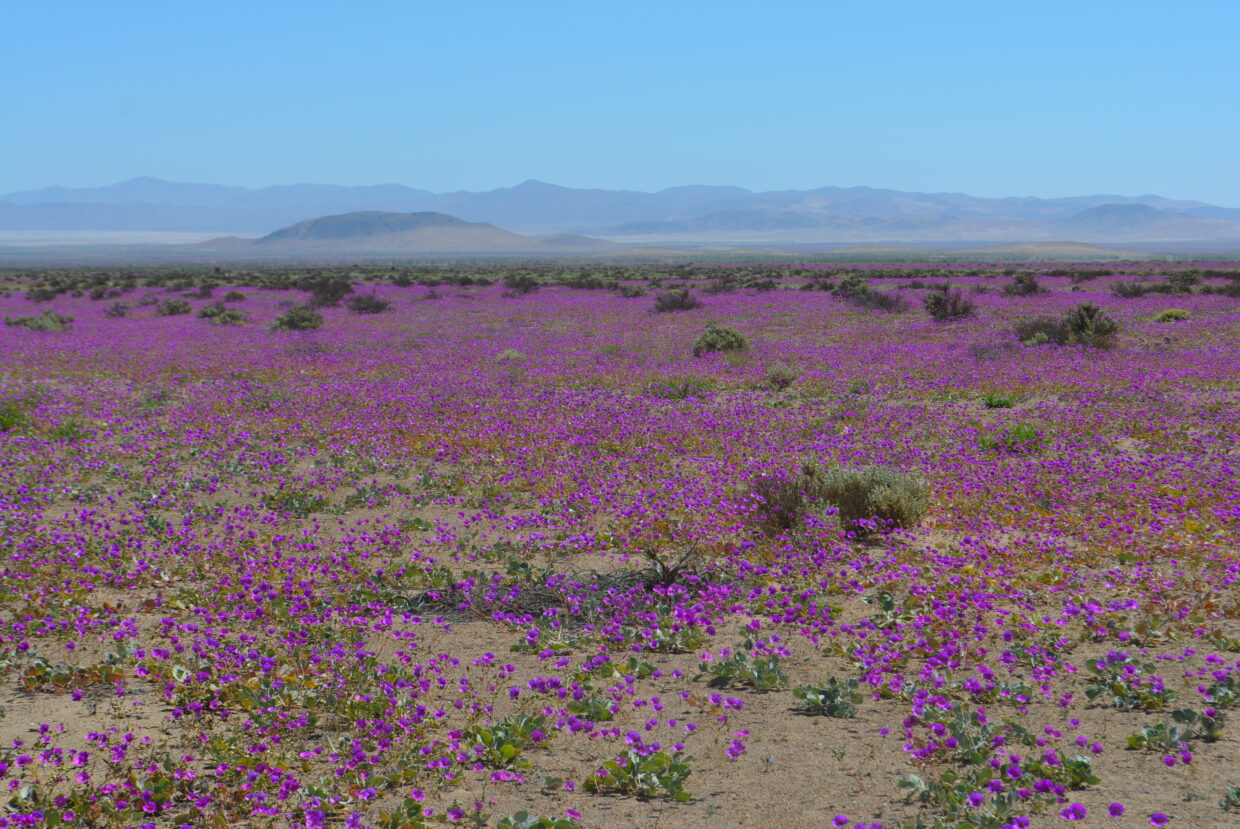The flowering desert in the Atacama Desert is generally triggered by the climate phenomenon known as El Niño / Southern Oscillation (ENSO). During an El Niño event, the warm surface waters of the Pacific Ocean lie offshore of north-western South America. This can lead to an increase in evaporation and therefore an above-average rainfall. The extent of this phenomenon along the Pacific coast can vary considerably. For example, in Chile, strong flowering desert events can extend from the northern border with Peru, to the Valparaíso region, where semiarid conditions prevail. However, such extended events are relatively rare, with the last one occurring in 2015, and prior to this in 1997. In contrast, the less strong events, which are confined to coastal areas in the southern Atacama Region southward to Coquimbo, have in the last 30 years resulted in flowering events at least in 1991, 1992, 1997-98, 2002-03, 2004-05, 2011, 2015 and 2017. The flowering desert phenomena usually takes place between September and November when annuals and geophtyes arise from the seemingly barren landscape. Most plant species are annual or short-lived perennials. Flowering peaks about two months after the rain and in some species, it may continue into part of the dry period. Excessive rainfall can limit the flowering due to flood water washing seed out of the ground into water channels and out to sea.
Habitat




